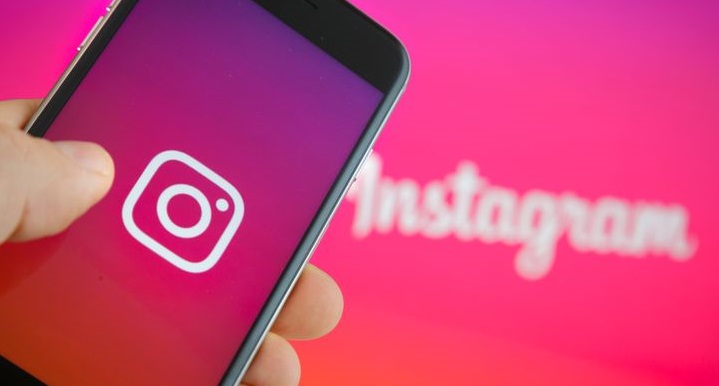The post-COVID landscape is already putting a lot of pressure on sellers. Those that are…
7 Reasons To have Images, Videos & Visuals In Your Content

Life is about attraction.
Of course, that can be interpreted in a variety of ways. But it makes sense in many realms of day-to-day interactions, decisions, and even pitfalls.
Humans are visual beings. We’re attracted to beauty.
Eye-catching visuals captivate us, then we use that focus to get a better idea of what a message truly is trying to say.
Visuals give us a better understanding of not just the message, but what’s behind the message — explained easier, faster, and clearer than just a cluster of written words.
The same can be said for sales and the forces that drive it, like marketing.
And let’s not lie to ourselves; the things that are most attractive in life — those people, places, and products — are always held in high regard by people. They’re sought after with great pride and determination. They’re popular and in demand.
Treat your content the same way.
Start by properly planning your content with its messaging, audience, and goals in mind.
But don’t ignore the need for compelling visual content.
From the beginning, you should be considering what kinds of images, info graphics, videos, animations, and any other rich media could be added to your content to enhance its messaging and further ensure it resonates with users.
There are many visual rich media types that will improve your content exponentially. But just how much will visuals improve your content?
For starters, web content containing visuals like images or videos perform better — on average, receiving up to 94 percent more views.
Email marketing campaigns that include images have a higher click-through rate than campaigns without.
Info graphics can increase website traffic by 12 percent.
Tweets with images or videos get, on average, a 35 percent or 28 percent increase in retweets, respectively.
And more than 100 million hours of video are watched on Facebook by more than a half billion people every day.
Most of all, let’s not forget to lean on science. Reading just words is insufficient for humans; content with visuals (i.e., photos) are easier to remember and are remembered more often.
Looking beyond blanket statistics, here are seven evidence-based reasons why content needs compelling visuals to truly deliver the results needed to be successful.
1. Humans Prefer Visuals
People are visual creatures by nature.
It’s not just because of our modern-day short attention spans and, in turn, our preferences for video, animation, and imagery over text because of how much faster we can consume it.
Visuals are also just easier to digest, as well as easier to remember.
And they’re more available than ever before.
With the growth of multi-device usage for people across the planet — and those devices having their own screens for even more widespread availability and consumption of storytelling aids like images, video, and other visuals — it’s no surprise visual content has become so vital to success.
It’s probably also why Cisco projects that internet traffic from videos will make up 82 percent of all consumer internet traffic on Earth by 2021.
In today’s digital climate, we’re more likely to be quickly captivated by an image or video than we are to words on a page.
We’ve seen the dramatic shift in content (and content preferences) with the growth of faster phones, better picture quality, faster internet connections, and more. We can expect this to continue trending that way.
2. Visuals Create Connections
Well, the right visuals create connections.
With the fast-paced lives many people live, it’s harder now more than ever to capture — and retain — attention spans.
We need all the help we can get to ensure people are actually listening (watching, reading, hearing, etc.) and consuming the content we produce.
Visuals help us make those connections.
These connections, which are built upon emotion and messaging, become stronger with creative, stimulating visuals that are the backbone of marketing success.
Not only do visuals give brands the chance to enhance and clarify their messaging; it also helps solidify brands’ identities.
Visuals offer the opportunity for more consistent messaging, which leads to increased familiarity with customers (the target audience) that will eventually lead to the loyalty all brands long for.
This goes together with establishing, and maintaining, a brand as an authority. Consistency makes this unequivocally easier.
3. Visuals Generate More Organic Visibility
As Google search evolves, so are the ways people search and interact with it.
There are now more search verticals at the forefront of search.
Users, now more than ever, know of the varying ways to use search to their advantage depending on the subject and stage of intent of what they’re searching for.
Both factors determine the results we see.
Marketers should be considering those (and other distinguishable factors), and the best way their messaging can be displayed in terms of how it appears on:
- Your webpages.
- Social media.
- Search
When snippets don compelling visuals, they perform better. That’s why click-through rates are higher for content that contains images.
Google is also continually transforming the way its platform works and/or is presented and, in turn, so does the way humans interact with it.
Since search results have become more personalized and dynamic, user interaction has changed.
Visuals stand a better chance to be seen since their surface area has increased across multiple search verticals as well.
In addition to more than half of all searches now beginning with a mobile device, voice search continues to grow. These are added chances for your rich media to show up, especially considering search results vary based on device nearly 80 percent of the time.
And let’s not forget that, on average, posts with videos earn more than three times the number of backlinks, another important search ranking factor.
There are also the added eyes that fall on the content by way of social media shares, emails, and more, including the referral visits attributed to those backlinks.
4. Visuals Help Capture Short Attention Spans
While obvious, it’s probably the most important one on this list.
No matter how you slice it, humans don’t just want visuals — they need them.
The average person can get distracted (or bored) within a few seconds. That’s doesn’t give you much time to grab someone’s attention. So make sure you capture their attention the right way – and fast!
But don’t stop there.
Make sure you’re offering the user quality content that can benefit them in some way, or you’re going to lose them.
5. Visuals Are More Memorable
Visuals don’t just stand out at first sight; they’re also easier to remember.
Add visuals to well-researched and useful content and that content is much more likely to resonate with its audience over time.
Visual aids can improve learning by up to 400 percent and be processed 60,000 times faster than text alone.
Remember when we used flash cards and other visuals in grade school to help us learn new topics? That’s because most of the human population consists of visual learners, or those who are able to comprehend and retain information better through the use of visual aids.
The idea is the same.
The majority of humans retain visual information much better, clearer, and longer than we are able to solely written words.
6. Visuals Help Drive Leads
Visual content leads to more engagement. And more engagement means more leads.
Match this concept with the brand consistency mentioned above, and one of the most critical components of your content strategy is in place. (Be sure to brand all digital assets as you publish them, that way, when they are re-shared across the web, your brand is getting the credit for them.)
The correlation between images and conversion rates was highlighted in a BaseCamp A/B test that compared sign-up pages before and after human images were added. Signups more-than-doubled once the image was added.
In organic search, 60 percent of people are more likely to click on a business that has images showing up in search results than one that does not.
And the quality of product images is also deemed very important when selecting a product.
This makes sense considering most people will see page image(s) before anything else, including a product title, and either be turned on or off, then decide to stay, go, or buy/convert.
7. Content Can Be Repurposed into a Variety of Rich Media Types
One challenge all marketers face is how to keep content fresh without too much reoccurring overhead (editing, shooting, color-correcting, etc.) – and without boring your audience by beating a dead horse.
That’s where repurposing content comes in.
There are various ways to repurpose data that is optimized for delivery on specific platforms/devices and for specific audiences, including various content forms for different stages of intent that make it possible to reach customers on all different stages of the buyer funnel.
Don’t be afraid to take survey data, write a blog post about your findings, then turn it into a pie chart, then an infographic, then an animated video, then a meme, then talk about it on a podcast.
Get the most out of your content by repurposing it in a way that makes the most sense for your audience.
Conclusions
Visuals can very well be the difference between having your content seen or not.
Make sure you offer your audience, not just compelling content, but visually appealing content that is compelling and can withstand the challenges of different platforms.
The numbers show just how much better rich media fares in the wild. Use it to your benefit, save money, and increase your brand following.






